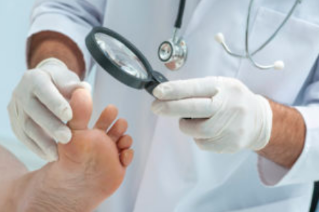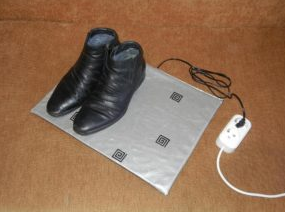Many of us know the expression: "I think I Have the fungus on toe nails, but do not know to what doctor to address". Really, what is this disease and who can heal? Let everything in order.

So, if you felt itching between the toes accompanied by redness and peeling of the skin, and nails strange things happen: they turn yellow, become thicker and start to flake, crumble, and sometimes very unpleasant smell, the above expression may apply to you. Frankly, it's unpleasant as these symptoms indicate the beginning of a very unpleasant disease called onychomycosis and is caused by parasitic on the human skin pathogenic fungi. According to medical statistics, among the most common infections it goes immediately for respiratory diseases.
Let's try to briefly tell you about what professionals should and can restore your health and restore peace of mind.
Go to the doctor! But to what?
If you notice these symptoms, do not despair and do not panic, moreover, do not attempt self-treatment. The sooner you decide to seek the assistance of a competent specialist, will increase your chances of a complete cure from disease.
So, to what doctor to go with nail fungus? We suggest that you first contact your family doctor, if any, or to the district physician of the outpatient clinic. They will examine you and listen to your concerns, then write a referral to the appropriate specialist. In the implicit cases, the specialist is a dermatologist who will conduct a comprehensive laboratory and instrumental diagnostic tests.
If the diagnosis of fungal infection is not confirmed, or in your community is no narrow specialist of fungal diseases, about which we say below, that a dermatologist will handle your treatment.
He also has all the necessary knowledge in this field, just his immediate specialization is much broader: it's pathology of the skin epithelium, associated with various inflammatory, parasitic, viral, bacterial, and fungal infections. When foot fungus problems are more local and relate directly to the horn plates.

Here we must make a small clarification: the color and structural changes of the nails can also be caused by diseases of internal organs or systems – like result for the differential diagnosis also is possible. In this situation to therapy to connect with other professionals.
In case, if the symptoms of onychomycosis confirmed with the appropriate staff in a medical facility, your disease will the doctor specializes in fungal diseases. Such specialist is called a mycologist.
A few words about the principles of treatment
Regardless of who carried out the treatment, the dermatologist or mycologist, they will act in the following a scheme developed:
- first, the individual treatment plan;
- monitor the course of treatment to achieve the final positive result;
- assigned to preventive activities.
Fungi, like other microorganisms tend to adapt to the effects of even the most potent of medicines, therefore, the greatest effect gives a comprehensive treatment of the disease involves the combination of tablet + special varnishes or ointments. In some cases, appointed injections and vitamin supplements. Your doctor may also recommend the use of folk methods of treatment, but only as a Supplement to the basic therapy and under his supervision.
In the initial stages, the disease can be cured with antifungal anti inflammatory lucky, for a couple of months to fully recover the nails.
In more severe cases, a mycologist can assign means to remove the affected nail. This medicines that have a natural base of essential oils that promote not only loss of the patient's nail, but rather the rapid emergence of the new.
And in the most severe cases tablets without systemic exposure do not succeed. When choosing a doctor takes into account not only their effectiveness in this particular case, but the individual tolerance of the patient and possible side effects.
Unfortunately, the process of treatment, especially in advanced cases can sometimes last several months. It is therefore very important patience and strict adherence to doctor's recommendations.

When the symptoms finally recede, the doctor prescribes a double re-examination that includes lab tests. The first takes place directly after the end of therapy, the next in a month. If you suspect a relapse your doctor may prescribe re-treatment.
In conclusion, on measures of prevention
Remember: failure to comply with recommended by physician preventive measures is fraught with the return of the disease.
And don't forget about precautionary measures, such as:
- do not neglect the daily hygiene procedures to stop, be sure to wash your feet in the evening;
- protect from injury bolsters the nail and skin on the feet;
- regularly wash and dry the shoes. On the website we wrote about means and methods of treatment of footwear from the mold;
- in the common areas (baths, saunas, pools, beaches, gyms) have a spare pair of shoes and never use someone else's;
- periodically clean the apartment from fungi products recommended by a physician;
- finally, once again: at the first suspicious symptoms resembling a fungal disease, you should immediately contact a dermatologist or mycologist.
The key to a quick and final recovery is the timely treatment to the doctor!





























